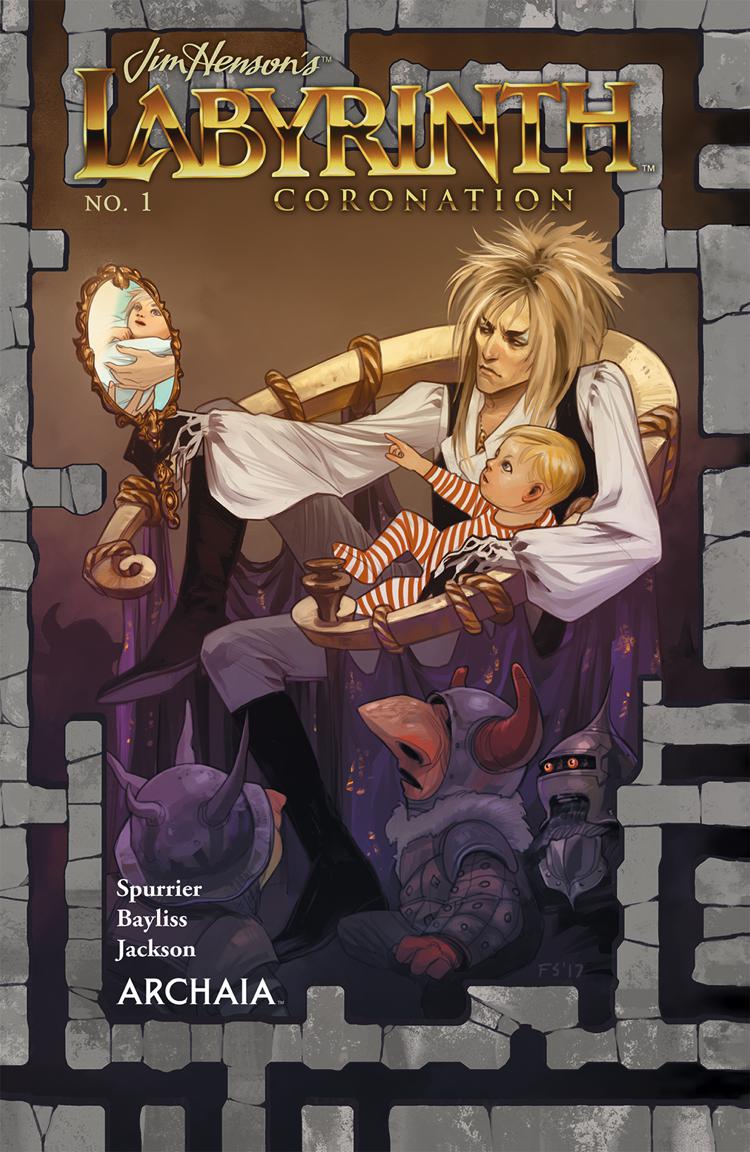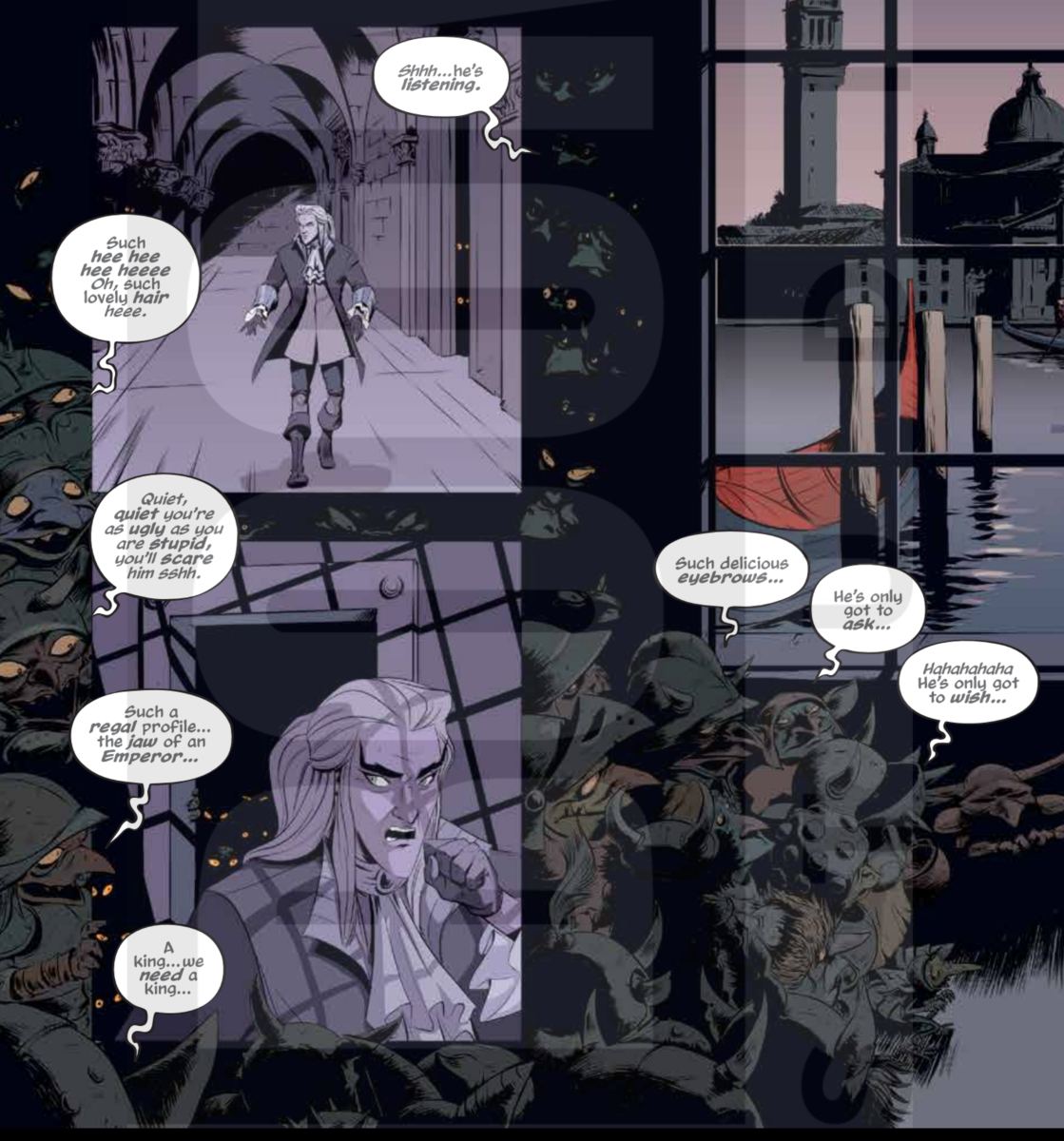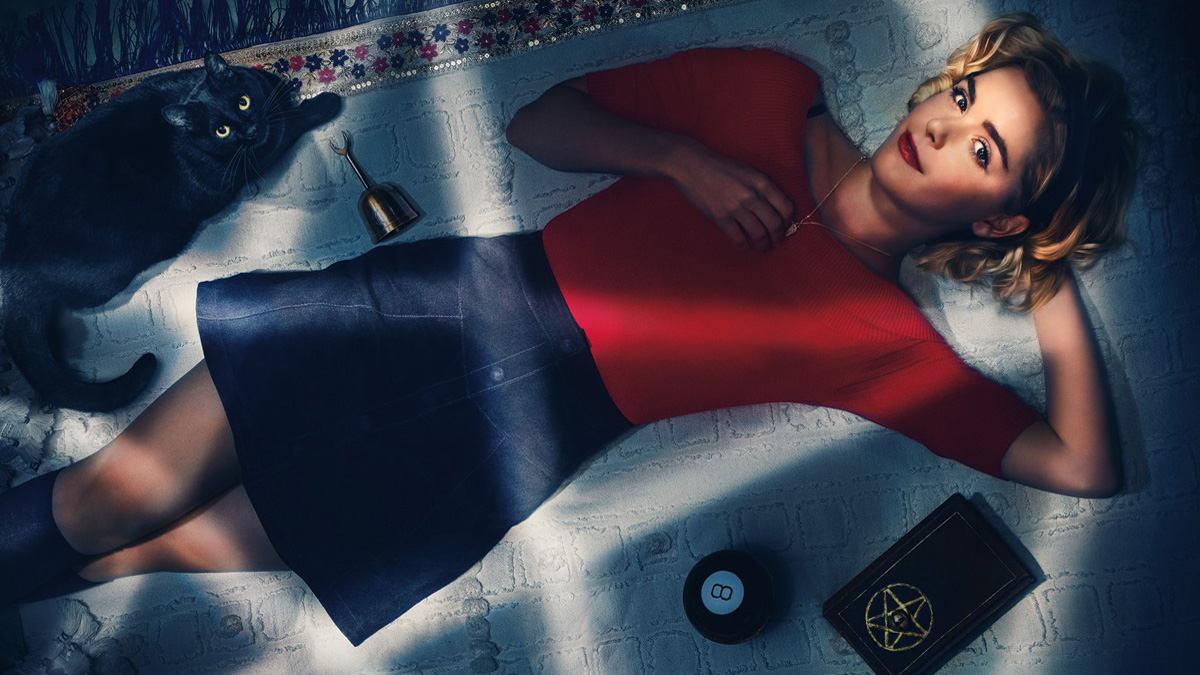Do you remember the scene in Labyrinth where Sarah’s just fallen into the oubliette, and Jareth is turning his crystal in his hand, watching her, surprised and frustrated that she’s gotten as far as she has? When one of the goblins says “She’ll never give up!” and Jareth truly loses his cool for one of the few times in the movie? No?
Then Labyrinth: Coronation is not written for you.
Jim Henson’s Labyrinth: Coronation is for people like me, who have been obsessive fans of the movie Labyrinth for years and years. And I’m very okay with that.

Dangers Untold and Hardships Unnumbered
The movie Labyrinth was released in 1986, when I was 6 years old. I can’t remember the first time I watched the movie; I assume that one of my older cousins showed it to me, as my parents definitely did not understand my obsession with fantasy and fairy tales. I fell so deeply in love with this movie that my partner, who has never seen it, is a little afraid of watching it with me in case he doesn’t like it and that makes me think of him differently.
I rarely rewatch movies or reread books, but Labyrinth is my ice cream after a breakup, my warm blanket and hot chocolate after a bad day, and my friend holding my hand in moments of grief – and joy. Without question or equivocation, this is my favorite Jim Henson movie. I can still recite large swaths of dialogue, am often found swaying through the kitchen crooning “As The World Falls Down,” and when I need a particular boost of courage, will whisper to myself “You have no power over me.” And it’s worth noting that while all my friends were staring at Bowie’s famous bulge, I was studying Sarah, wondering what it would feel like to run my fingers through her long hair. Turns out Dana Scully was my second big crush.
At its heart, Labyrinthis a story about what happens when we get our wishes. About how we rarely wish for things that are good for us. About how even when we’re angry, we protect what is ours. About how “if that is how it is done, then that is how you must do it. But remember… should you need us…” For an adopted, queer kid whose gender falls outside the binary, who early on embraced the concept of a family of choice and who lived in imaginary worlds because the real ones hurt, this movie was a touchstone that helped me survive my childhood.
To Take Back The Child That You Had Stolen
- Written by: Simon Spurrier
- Illustrated by: Daniel Bayliss
- Colored by: Dan Jackson
- Lettered by: Jim Campbell
When I first heard about Jim Henson’s Labyrinth: Coronation from Boom, I wasn’t entirely sure what the book would be about. After all, there’s no real explanation given in the original movie about why Jareth steals Toby. He’s in love with Sarah, and Sarah makes a wish. After that, what’s done is done. Jareth says that Toby will turn into one of them (the goblins) if Sarah can’t solve the labyrinth in thirteen hours. But why? Jareth is the Goblin King and appears human; perhaps he’s looking for a human child to take his place or to be his heir?
This is the story that is being told so far in Labyrinth: Coronation. The first issue picks up immediately after the scene quoted in the first paragraph, with Jareth chastising the goblin who said Sarah would never give up. Jareth takes Toby, saying that he has a lot to learn of the goblin way. “You’re to become one of us, little fellow – and goblins care far more for tales than truths. And so you shall have a story. The story of an unvanquished heart.”

After this, the setting moves to Venice in 1797. We see a grand ball, reminiscent of the dream Sarah fell into after she ate the poisoned peach. We meet Maria and Albert; although they play the roles of Count and Countess, Albert is some sort of English nobility fleeing debts from across Europe while Maria was a linen maid who passed herself off as nobility to win a marriage to Albert, who bears a clear resemblance to Jareth in the movie; the first panels where he is alone, we see the goblins in the gutters, whispering and talking about him the same way they whispered and talked about Sarah. “A king…we need a king…he’s only got to ask…he’s only got to wish…and the crown is his…”

This design, the goblins clustering around the panels and intruding around the edges but never coming into focus, creates an amazing atmosphere. One can feel the way they are digging into Albert’s very thoughts without him understanding what is happening. The color palette changes, shifting from the bright, elaborate coloring of the ball into a dark blue and gray world of inner pain and distress. When Maria finds him in clearly physical distress, she asks if he’s ill – if he has a fever – if it was the visions, the monsters? The goblins have been tormenting him for months, if not years.
Albert brushes off Maria’s concern, and leaves the ball. Maria follows him and discovers that he plans to flee Venice because Napoleon is approaching the city; Englishmen will not survive his occupation. Maria has been lying about being a countess, something Albert clearly knew, but due to her common birth, he will not bring her back to London with him. They have a child; Albert says the boy will be taken to an orphanage. Maria knows he’s lying and flees with their son.
And just like Sarah, Albert makes a wish. As his Venetian home burns around him, he says the goblins have nothing to offer him; after all, he is already royalty. But if they want a king – he wishes them to take his son. And then he says those words we all know so well.
“Right. Now.”

But here is where the stories in the movie and the comic start to diverge in subtle but crucial ways. Sarah’s wish – “I wish the goblins would take you away. Right now.” – is born of childish anger. She is resentful of how her baby brother is changing her life, and the story implies that she resents her father’s new marriage and her step-mother. She’s already furious when Toby starts to cry, and she’s unable to settle him. Her wish is the moment her temper finally snaps. When Toby’s crying abruptly stops, Sarah quickly regrets what’s happened. When Jareth appears to her, she demands her brother back, trying to argue that she didn’t mean what was said. And of course, Sarah then takes on the quest to prove it
Albert, however, exits the narrative completely. What is his motivation in making the wish that attracts goblin attention? Does he hope that his son will somehow be rescued from the fate that lies at the hands of his henchmen – or does he hope that the child will disappear from the world to protect him from the threat of blackmail? Or does he simply want the voices to stop? The narrative does not seem interested in exploring this. After all, it is Maria who finds herself willing to go to any lengths to recover her son.
There is a quick break in the telling of the story for Jareth to remind us that we do not know the baby’s name, and he has not said that the baby is him. The goblin with him asks, “[D]on’t we already know how this story ends?”
Jareth’s response frames what I expect from the rest of this series:
This child’s kin is trying to save him. Badly, stupidly, arrogantly…but still–trying. You think it’s irrelevant to consider the precedents?… Because the baby is not the full story. Sometimes a child’s just a thing. What it grows up to become–or not become–isn’t the point.
The real story belongs to those who love it.
The last page of issue 1 shows two images. Maria, gasping and crying out for her son – and Jareth repeating the words the goblin said to him back in the very beginning: “She’ll never give up.”

Labyrinth: Coronationand Its Power Over Me
I am deeply in love with so many aspects of this book.
The art is compelling in a way that I didn’t expect, using the juxtaposition of different styles to represent different types of characters. The realm of the labyrinth is filled with sharp angles and distinct lines, lacking the natural roundness that comes from a human figure. Albert, the human character most touched by the goblins, is drawn in a similar style. The other human characters, in contrast, are given softer, warmer faces. It’s a simple dichotomy – the humans look natural, while the labyrinth looks unnatural without being artificial. This doesn’t remove me from the story, nor does it seem like a poor choice – it’s a difficult balancing act that I’m highly impressed with, bringing forth the effect of the puppetry in the original film.
The way Jareth’s lettering is done, however, was particularly intriguing to me. The last time I remember seeing white lettering in black bubbles was with Morpheus in Neil Gaiman’s Sandman. Tying the Goblin King to the Endless left me grinning, imagining Delirium and Jareth getting together for a little sing-along, or connecting the late David Bowie’s total refusal to embrace binary gender norms to Desire’s fluid connection to gender.
There are really two possible endings to the story here; Maria will win through and get her son back, the way Sarah eventually got Toby back from Jareth, or she won’t. She’ll give up. She’ll be the reason that Jareth believes that Sarah will never make it to the center of the labyrinth.
When I’m reading the first issue of a twelve-issue miniseries, I ask myself what I’m looking for this story to do. I’m not worried about the story ruining Labyrinth that’s just not how fandom works for me. I want to see the world of the Goblin King deepened. I want to know more about Jareth, about the man who loves a girl so much he gives her the wishes she doesn’t even want just to please her. What I am not looking for this story to do is to convince my partner to watch the movie with me (though it turns out, he is much more interested after reading this).
Because I just looked up to something I said, just two paragraphs ago. “There are really two possible endings to the story here.” But the labyrinth challenges your assumptions. The labyrinth pushes you to think in new ways. The labyrinth makes you reconsider everything about who you are. And goblins care more for tales than truths. So we shall have a story.
I am so excited to find out what’s at the center of the labyrinth, and who Maria will be when she gets there
Disclaimer: GeekMom received a copy of this comic for review purposes.




